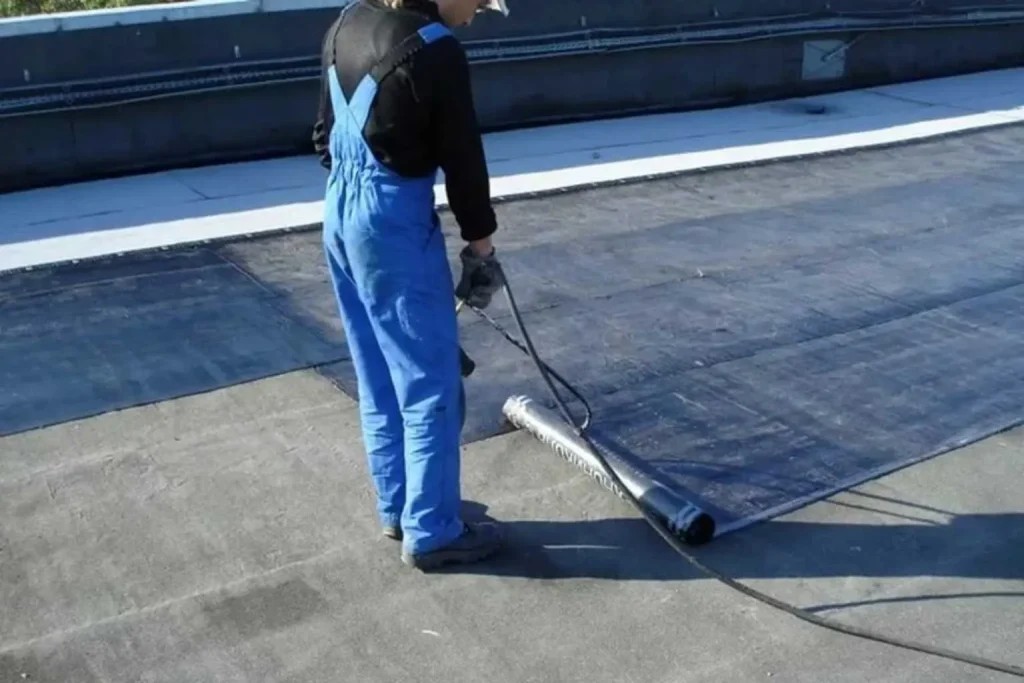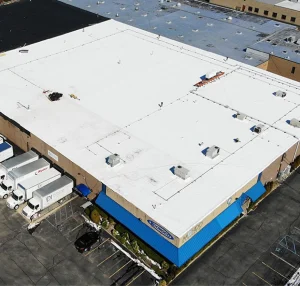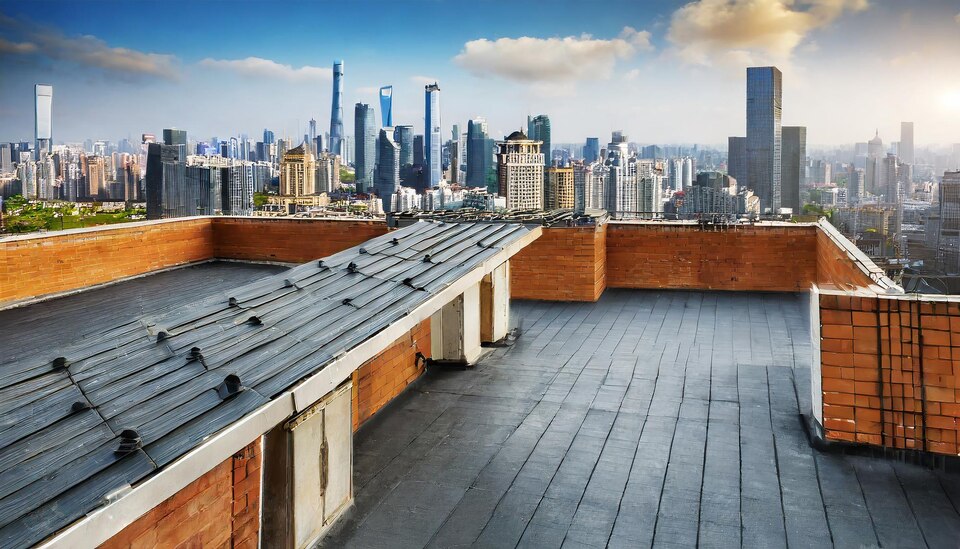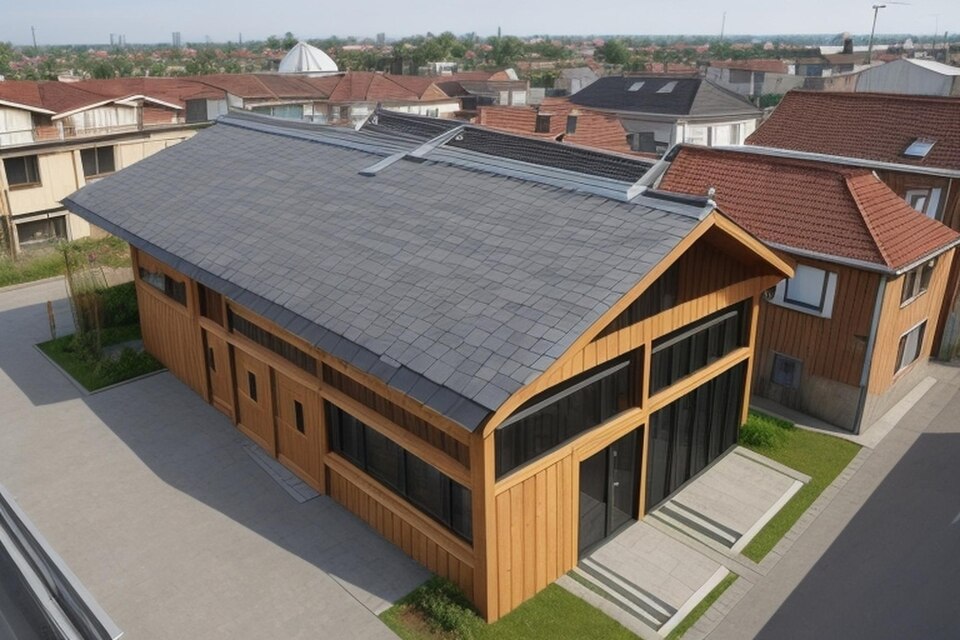Why EPDM Is the Best Flat Roofing System for Cold Climates
When it comes to protecting your commercial building from the harsh realities of winter, not all roofing systems are created equal. Choosing the right roofing material for a flat or low-slope roof is a significant decision, especially when facing harsh winter conditions. Frigid temperatures, heavy snowfall, and freeze-thaw cycles demand a roofing system that can withstand extreme weather without failing.
At Apex Commercial Roofing, we understand that cold climates demand materials that can stand up to freezing temperatures, snow, ice, and dramatic thermal shifts. That’s why we often recommend EPDM (Ethylene Propylene Diene Monomer) roofing for flat roof applications in cold regions. Let’s explore.
What Exactly Is EPDM Roofing?
EPDM is a type of synthetic rubber, a durable membrane primarily used for flat and low-slope roofing applications. Think of it as a large, resilient rubber sheet designed specifically to cover and protect the top of a building. It’s been used commercially for decades, proving its reliability.
The material is manufactured in large sheets, which means fewer seams are needed during installation compared to some other roofing types. Fewer seams translate to fewer potential points for leaks, a definite advantage in areas prone to heavy rain or melting snow. Installation is typically straightforward for experienced roofers.
Superior Flexibility When Temperatures Plummet
One of the most significant advantages of EPDM in cold climates is its remarkable flexibility, even when temperatures drop well below freezing. Unlike some materials that become brittle and prone to cracking in the cold, EPDM retains its elasticity. This flexibility allows it to expand and contract with temperature fluctuations without sustaining damage.
Imagine a roof constantly battling freezing nights and slightly warmer days. This cycle puts immense stress on roofing materials. EPDM’s ability to handle this movement prevents the formation of cracks that could lead to leaks and costly repairs down the line.
- Benefit: Remains pliable in sub-zero conditions.
- Avoids: Brittleness and cracking.
- Result: Handles expansion and contraction cycles.
Withstanding Freeze-Thaw Cycles
Cold climates are notorious for their freeze-thaw cycles. Water melts during warmer parts of the day or from building heat loss, seeps into tiny imperfections, and then freezes and expands overnight. This expansion can widen cracks and degrade roofing materials over time.
EPDM‘s seamless nature (when installed in large sheets) and inherent water resistance provide excellent protection against this damaging cycle. Water has fewer places to penetrate, and the material itself isn’t easily compromised by the expansion of trapped ice. Its robust nature stands up well to repeated freezing and thawing.
Handling Heavy Snow Loads Effectively
Heavy snowfall places considerable weight stress on any roof. A flat or low-slope roof needs a membrane strong enough to support accumulated snow without tearing, puncturing, or compromising its structural integrity. EPDM membranes possess impressive tensile strength.
This strength means the roofing system can bear the weight of deep snowdrifts. Additionally, its smooth surface can sometimes facilitate snowmelt runoff more easily than rougher surfaces, potentially reducing the duration of heavy loading. The durability of the membrane is key to preventing punctures from compacted snow or ice.
- Strength: High tensile strength supports weight.
- Surface: A relatively smooth surface aids runoff.
- Integrity: Resists tearing under load.
At Apex Commercial Roofing, we offer snow removal services for New Jersey, New York, and Pennsylvania. Our certified team is here for you. Contact us at 1 800 231-2941 or 1 856 203-6108 for more information.
Exceptional Waterproofing Capabilities
Keeping water out is the primary function of any roof. EPDM excels in this area. Its composition makes it inherently waterproof. Properly installed EPDM systems, particularly those using large single sheets, create a virtually impermeable barrier against water intrusion, making them waterproof.
This is especially valuable when dealing with melting snow and potential ice dams. Ice dams form when snow melts, runs down the roof, and refreezes at the colder eaves, blocking further drainage. The pooled water behind the dam seeks entry points, making EPDM’s watertight seams and membrane crucial for preventing leaks.
Resistance to Ultraviolet (UV) Radiation
Even cold climates experience significant sun exposure, especially during winter when snow reflects sunlight. UV radiation can degrade roofing materials over time, causing them to break down, become brittle, or lose their protective qualities. EPDM formulations are designed for excellent UV resistance.
This resistance helps the membrane maintain its flexibility and strength for many years, even with regular sun exposure. Unlike some other roofing types that might require periodic coatings for UV protection, EPDM generally holds up well on its own, contributing to its low maintenance profile.
Installation Methods Suited for Colder Conditions
EPDM roofing can be installed using several methods: fully adhered, mechanically attached, or ballasted. The fully adhered method, using bonding adhesives, creates a very secure and watertight system, often preferred for its sleek appearance and wind resistance. Special low-temperature adhesives are available, extending the installation window in cooler weather compared to some temperature-sensitive systems.
Mechanically attached systems use plates and fasteners, which can be installed in a wider range of temperatures. Ballasted systems, where the membrane is held down by gravel or pavers, add weight and insulation, which can be beneficial in cold climates, though they require a structure capable of supporting the extra load. The versatility in installation helps accommodate different project needs and weather conditions.
At Apex Commercial Roofing, we offer free estimates for repairs and installations.
Impressive Longevity and Durability
Building owners appreciate roofing systems that last. EPDM roofs are known for their long service life, often lasting 30 years or more with proper installation and minimal maintenance. This durability stems from its resistance to weather extremes, UV radiation, and general wear and tear.
Investing in a long-lasting roof like EPDM means fewer replacements over the building’s lifetime. This translates to significant long-term cost savings and less disruption compared to materials requiring more frequent replacement, especially in challenging cold climates where roofing work is seasonal.
- Lifespan: Often exceeds 30 years.
- Resistance: Holds up to weather, sun, and wear.
- Value: Reduces long-term replacement costs.
Maintenance Requirements in Winter
EPDM roofs generally require minimal maintenance. Routine inspections, typically twice a year (spring and fall), are advisable to check for any potential issues like debris accumulation or damage around penetrations (pipes, vents). Keeping drainage paths clear is vital, particularly before winter sets in.
Should a puncture or tear occur, perhaps from falling branches or foot traffic, EPDM is relatively easy to repair. Specialized patches and sealants allow for durable fixes, restoring the membrane’s integrity. This ease of repair is advantageous, minimizing the potential for small issues to become large water intrusion problems.
Cost-Effectiveness Over the Long Term
While the initial installation cost of EPDM might be comparable to or slightly higher than some alternatives like asphalt roofing, its longevity and low maintenance needs make it very cost-effective over its lifespan. Fewer repairs and a much longer replacement cycle lead to lower lifetime costs.
When you factor in the reduced risk of leaks and associated interior damage, especially pertinent in climates with heavy snow and ice, the value proposition of EPDM becomes even clearer. It represents a sound investment in protecting the building envelope from harsh winter elements for decades.
Why EPDM Is the Best Flat Roofing System for Cold Climates
Choosing a roofing system for cold climates demands careful consideration of material properties. EPDM rubber roofing consistently demonstrates the characteristics needed to perform reliably in freezing temperatures, under heavy snow loads, and through damaging freeze-thaw cycles. Its inherent flexibility, strength, waterproofing capability, and UV resistance contribute to its success.
The long service life and relatively low maintenance requirements further solidify EPDM’s position as a leading choice. For property owners seeking a durable, dependable flat roofing solution that stands up to the rigors of winter, EPDM presents a compelling and cost-effective option worthy of serious consideration.
Trust Apex Commercial Roofing with installing your EPDM roof. Check out our services at 811 Church Road, Cherry Hill, NJ 08057.

Visit Apex Commercial Roofing LLC at Our Cherry Hill Location
811 Church Rd #105,
Cherry Hill, NJ 08002,
United States
For professional roofing services, including commercial roofers, commercial metal roof repair, we invite you to stop by or reac







